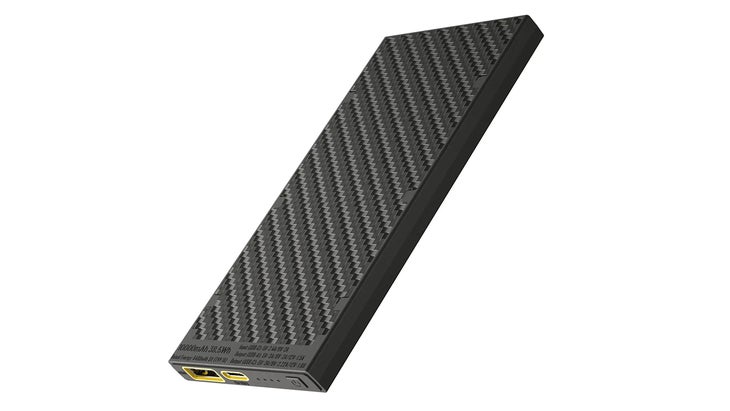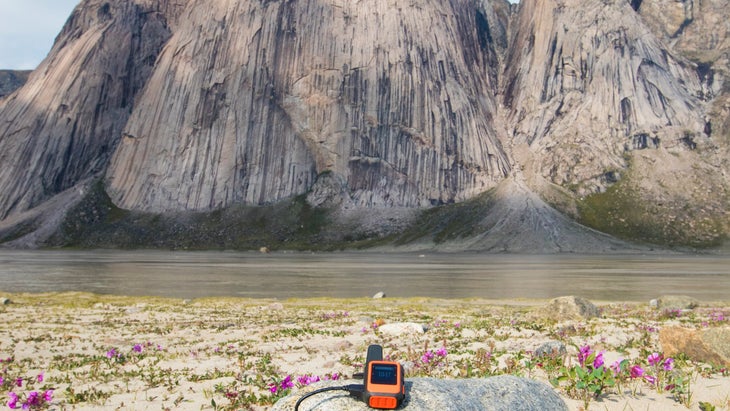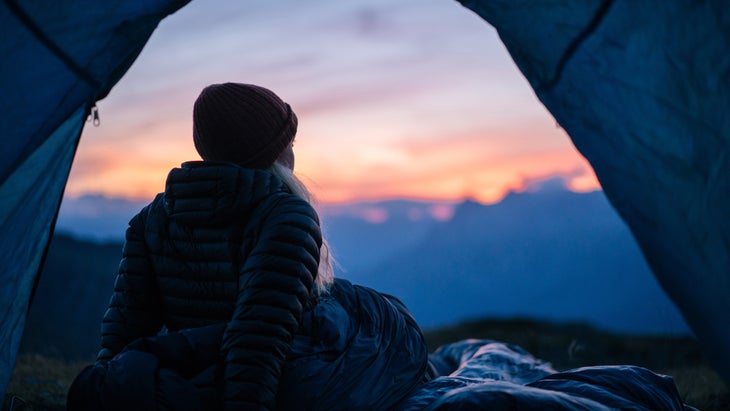Products You May Like
For most modern-day hikers, electronics are among the heaviest items in our packs. Between a smartphone (about 7 ounces), a satellite messenger (3.5-8 ounces), and a battery bank (anywhere from 5-16 ounces), most of us are carrying around more than a pound of electronics. And those are just the “essentials”: Adding in solar chargers, e-readers, and other “luxury” gadgets can easily double or triple that number. For most backpackers—and certainly every ultralighter—each pound on your back adds up quickly.
However fastidious you are about pack weight, re-examining the electronics you take on a trip can be worthwhile, both for ounce-counting and peace of mind. If you’re feeling overwhelmed by that stuff sack full of charging cables and gadgets, read on for our advice on managing tech in the backcountry.

Simplify your setup
Years ago, most electronics that people found useful on backpacking trips were powered by removable, disposable AA or AAA batteries. Now, USB-rechargeable devices are far more prevalent. One of the easiest ways to simplify your gadgetry is to upgrade to rechargeable devices across the board and leave the conventional batteries at home. On short trips, you’ll be able to forget about batteries altogether, and on longer trips you can recharge all of your devices using a battery bank like the Nitecore NB10000 and a few USB cables. Common culprits due for an upgrade include headlamps, PLBs, and older devices like digital cameras or mp3 players.
Trying to predict the correct size of battery bank can seem tricky, but it’s really just a matter of simple math. Most small batteries and power banks measure energy capacity in milliamp hours, or mAh. Take the labeled capacity of the power bank and multiply it by 3.7 (the average voltage of a battery cell). Next, divide the result by the output voltage of your power bank (if you can’t find it in the specs, 5 volts is a good guess.) Take the number you get and multiply it by 0.85, the average efficiency of a power bank. Finally divide the result by the labeled capacity of your device in mAh, and you’ll end up the number of charges you can expect to get. (Confused? Here’s an explainer from RAVPower.)
It might take a few trips to figure out how often you need to charge your phone and other devices in the backcountry, but pretty soon you should have an idea of what size battery bank makes sense for you. Banks that are appropriate for hiking range from 5,000 mAh power sticks that weigh about 4 ounces and will power one or two devices on a single charge, to 20,000 mAh bricks that can bring an energy-hungry smart phone back from the dead four or five times.
One attractive alternative to battery banks is a solar charger, especially for those in sunny climates. And while a solar charger can provide near constant charging in the right conditions, it’s worth noting that most well-regarded models, like the Anker 513, weigh in north of a pound. It may still make sense for those on long expeditions or backpacking trips without stops in town, or anyone with multiple devices to charge, but for most hikers, a solar charger rarely factors into an ultralight equation.

Conserve battery life
By enabling as many battery-saving settings on your devices as you can, you’ll not only reduce the amount of time you spend fiddling with cables and chargers, but potentially conserve enough battery life that you can opt for a smaller, lighter battery bank.
On your phone, start by turning on airplane mode. Many backpackers leave it at that, but on modern phones, just enabling airplane mode leaves plenty of other battery-draining services active. Turn off location data, Bluetooth connectivity, enable power-saving mode, and dark mode —a bright screen is one of the biggest battery drains of all. On Android devices, you can manually set up your own “extreme battery saver” mode that will shut down every app except for the ones that you’ve whitelisted.
With satellite communicators, the easiest way to conserve battery life is to reduce the amount of time it searches for a satellite connection. You can do that by keeping it turned off whenever it’s not in use. If you do want to leave your device on while you hike and track your location, you can set it to ping at longer intervals (like 15 or 30 minutes). Finally, don’t underestimate how quickly the battery can drain when your device is searching for a connection under tree cover or other obstructions—if you plan to send out a few messages, it pays off to search out clear skies beforehand.
If you’re a big music or audiobook listener while hiking, it might be worth bringing a standalone music player, even if that seems counterintuitive from a weight-savings standpoint. Listening on your phone might seem simpler than carrying an extra device, but a smartphone is not a very efficient music player, which means you’ll be using more battery life and charging more often. Opting for a small mp3 player might end up saving you battery weight, especially if you’re using it for hours every day.

Change your gadget habits
There are plenty of gadgets that are useful in everyday life, like fitness trackers or smart watches, that have limited utility on the trail. Tracking your steps, heart rate, or sleep quality might be part of your daily routine, but for most people, it’s something you can do without. Common unnecessary extras include action cameras like a GoPro (which, at 4 ounces, seems light until you factor in extra batteries and mounts) and bluetooth speakers (not only extraneous weight, but a nuisance to your fellow hikers).
Another common reason to overpack on electronics is overestimating the amount of free time or energy you’ll have on a trip. That might mean you lug around a heavy DSLR camera, but find that you rarely take any pictures besides quick snapshots that could just as easily have been captured on your phone camera. Or you load up your Kindle with a great novel you’ve been meaning to read, but fall asleep as soon as your head hits the inflatable pillow. It could be as simple as bringing along a pair of earbuds to pass the time listening to music or podcasts, or enjoying the quiet solitude of nature, instead.
In each case, it’s worth considering what habits each device is enabling, and whether that’s something you want to entertain on your trip. You just might find that a backpacking trip serves as a welcome escape from all the screens, media, and gadgetry of modern life, and that you’re happy leaving most of it behind.
